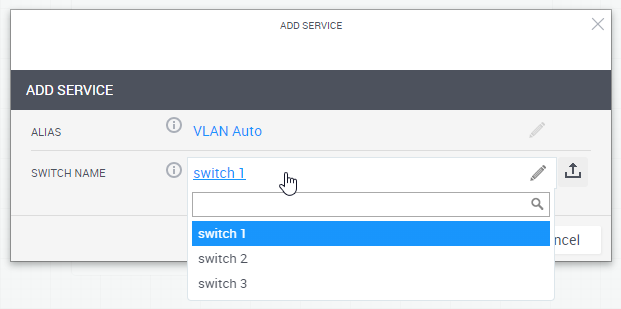Cloud Provider Shells - Features and Capabilities Per Release
This article lists the enhancements and capabilities introduced with each release of our certified 2nd Gen cloud provider shells, as well as documentation references.
In addition to our certified cloud provider shells, we also have "community" grade cloud provider shells that were developed by our community's developers, including shells for Nutanix and Google Cloud Platform. Feel free to download them from Quali Repositories.
In this article:
VMware vCenter
- Shell's community page - VMware vCenter Cloud Provider Shell 2G.
- Shell's README.
Note: vCenter 5.0.0 and above works only with CloudShell 2022.1 EA and above.
| Release | Capabilities added |
|---|---|
|
6.0.0 |
Optional port group attributes. To use these attributes, the CloudShell admin needs to manually add them to the VLAN service model in Resource Manager Client. For details, see Configuring Services. The new attributes are:
|
|
5.0.5 |
|
|
4.2.5 |
|
|
5.0.3 |
|
|
5.0.2 |
|
|
5.0.1 |
|
|
5.0.0 |
|
|
4.2.0 |
|
|
4.1.0 |
|
|
4.0.0 |
|
| 3.5.0 |
|
| 3.4.0 |
|
| 3.3.0 |
|
| 3.2.0 |
|
| 3.1.2 |
|
| 3.1.1 |
|
| 3.0.0 |
|
|
2.2.0 |
|
|
2.1.0 |
|
|
2.0.1 |
|
|
1.0.0 |
|
vCenter Static VM
- Shell's README.
| Release | Capabilities added |
|---|---|
| 1.0.0 |
|
Microsoft Azure
- Shell's community page - Azure Cloud Provider Shell 2G.
- Shell's README.
| Release | Capabilities added |
|---|---|
|
2.5.0 |
|
|
2.4.2 |
|
| 2.4.1 |
|
| 2.4.0 |
|
| 2.3.0 |
|
| 2.1.0 |
|
| 2.0.0 |
|
| 1.1.2 |
|
| 1.0.0 |
|
Amazon AWS EC2
- Shell's community page - Amazon AWS Cloud Provider Shell 2G.
- Shell's README.
| Release | Capabilities added |
|---|---|
|
1.2.0 |
|
| 1.1.1 |
|
| 1.1.0 |
|
| 1.0.3 |
|
| 0.2.2 |
|
OpenStack
- Shell's community page - OpenStack Cloud Provider Shell 2G.
- Shell's README.
| Release | Capabilities added |
|---|---|
|
1.2.1 |
Supported on CloudShell 2022.2 GA and up
|
|
1.2.0 |
Supported on CloudShell 2022.2 GA and up
|
|
1.1.0 |
|
| 1.0.0 |
|
| 0.1.1 |
|
Kubernetes
- Shell's community page - Kubernetes Cloud Provider Shell 2G.
- Shell's README.
| Release | Capabilities added |
|---|---|
| 1.0.1 |
|
Oracle Cloud Infrastructure (OCI)
- Shell's community page - Oracle Cloud Infrastructure (OCI) Shell 2G.
- Shell's README.
| Release | Capabilities added |
|---|---|
| 1.1.9 |
|
| 1.1.5 |
|
| 1.1.4 |
|
| 1.1.3 |
|
Cisco VIRL
- Shell's community page - VIRL Shell 2G.
- Shell's README.
| Release | Capabilities added |
|---|---|
| 1.0.2 |
|
| 1.0.1 |
|
| 1.0 |
|

